Themed collection JAAS Emerging Investigator Lectureship winners

Fundamentals and new approaches to calibration in atomic spectrometry
Principles and applications of both traditional and some recently described calibration methods used in atomic spectrometry are critically discussed.

J. Anal. At. Spectrom., 2019,34, 2353-2369
https://doi.org/10.1039/C9JA00273A
Compressed sensing in spectroscopy for chemical analysis
An intuitive view of compressed sensing is presented with selected examples to highlight its potential impact in atomic spectrometry.
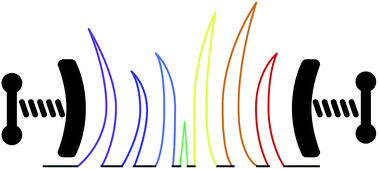
J. Anal. At. Spectrom., 2016,31, 2165-2174
https://doi.org/10.1039/C6JA00262E
Depth profile analysis with glow discharge spectrometry
Glow discharge spectrometry shows excellent capabilities for fast compositional depth profiling of modern and challenging materials.
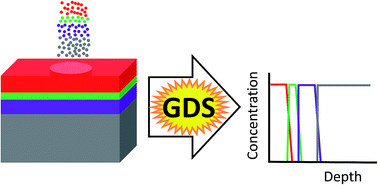
J. Anal. At. Spectrom., 2017,32, 920-930
https://doi.org/10.1039/C7JA00055C
Halogen determination in food and biological materials using plasma-based techniques: challenges and trends of sample preparation
Sample preparation for trace halogen determination in biological and food samples is a critical aspect to be considered.
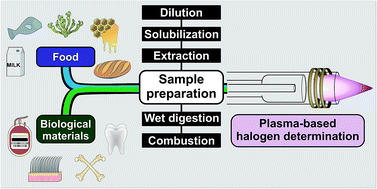
J. Anal. At. Spectrom., 2016,31, 1243-1261
https://doi.org/10.1039/C5JA00488H
Excitation of higher levels of singly charged copper ions in argon and neon glow discharges
Transition rate diagrams of copper ions in argon and neon glow discharges are presented, using data from Cu II emission spectra.

J. Anal. At. Spectrom., 2014,29, 2256-2261
https://doi.org/10.1039/C4JA00309H
Automated standard dilution analysis
Automated standard dilution analysis provides rapid, accurate, and precise calibrations, correcting for both matrix effects and source fluctuations.

J. Anal. At. Spectrom., 2020,35, 178-187
https://doi.org/10.1039/C9JA00339H
Multi-collector ICP-mass spectrometry reveals changes in the serum Mg isotopic composition in diabetes type I patients
Serum Mg shows a lighter isotopic composition in diabetes type-1 patients than in an age- and gender-matched reference population.

J. Anal. At. Spectrom., 2019,34, 1514-1521
https://doi.org/10.1039/C9JA00097F
Multi-flow calibration applied to microwave-induced plasma optical emission spectrometry
A novel calibration method based on multiple nebulization gas flow rates is used to improve accuracy and sample throughput in microwave-induced plasma optical emission spectrometry.

J. Anal. At. Spectrom., 2019,34, 1191-1197
https://doi.org/10.1039/C9JA00091G
Multi-energy calibration for the determination of non-metals by high-resolution continuum source molecular absorption spectrometry
Spectra of diatomic molecules are rich in fine structures which may be used for different analytical applications in high-resolution continuum source molecular absorption spectrometry (HR-CS MAS).
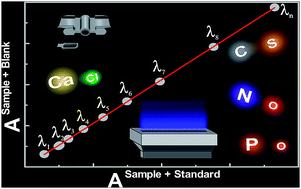
J. Anal. At. Spectrom., 2019,34, 972-978
https://doi.org/10.1039/C9JA00006B
Direct lead isotopic analysis of bioethanol by means of multi-collector ICP-mass spectrometry with a total consumption sample introduction system
A method has been developed for the direct (no sample pretreatment and/or isolation of the target element from the sample matrix) Pb isotopic analysis of bioethanol via multi-collector ICP-mass spectrometry (MC-ICP-MS).
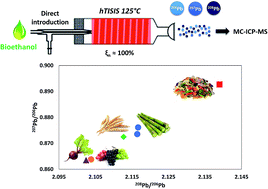
J. Anal. At. Spectrom., 2018,33, 481-490
https://doi.org/10.1039/C8JA00020D
Laser ablation-inductively coupled plasma-mass spectrometry for quantitative mapping of the copper distribution in liver tissue sections from mice with liver disease induced by common bile duct ligation
High-resolution LA-ICP-MS bioimaging was shown suitable for the quantitative visualization of the Cu distribution in fibrotic mouse liver tissues on a (sub-)cellular level.
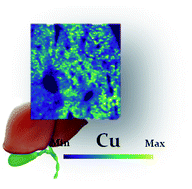
J. Anal. At. Spectrom., 2017,32, 1805-1812
https://doi.org/10.1039/C7JA00134G
Sample preparation of lipstick for further Cd and Pb determination by ICP-MS: is the use of complexing acids really necessary?
In this work, the use of complexing acids (HF and HCl) combined with HNO3 was evaluated for lipstick digestion and further Cd and Pb determination by ICP-MS.
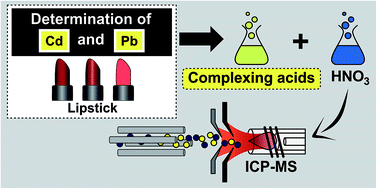
J. Anal. At. Spectrom., 2017,32, 1780-1788
https://doi.org/10.1039/C7JA00139H
Natural Fe isotope fractionation in an intestinal Caco-2 cell line model
Caco-2 cells were used in an in vitro model for studying the Fe isotope fractionation accompanying intestinal Fe fluxes.
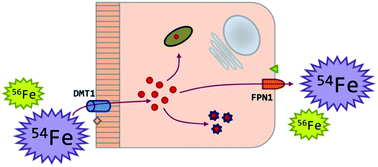
J. Anal. At. Spectrom., 2017,32, 1713-1720
https://doi.org/10.1039/C7JA00090A
The production of doubly charged sample ions by “charge transfer and ionization” (CTI) in analytical GD-MS
Charge transfer and ionization, producing high concentrations of doubly ionized ions, is identified for the first time in analytical GD-MS.
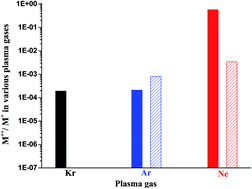
J. Anal. At. Spectrom., 2017,32, 1721-1729
https://doi.org/10.1039/C6JA00415F
Arsenic speciation in seafood by LC-ICP-MS/MS: method development and influence of culinary treatment
Arsenic speciation in seafood after several culinary treatments was performed and AsB, As(III), DMA, MMA and As(V) species were determined by LC-ICP-MS/MS.
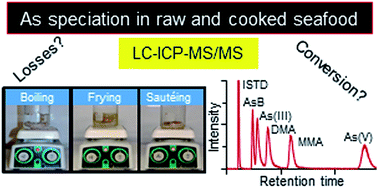
J. Anal. At. Spectrom., 2017,32, 1490-1499
https://doi.org/10.1039/C7JA00052A
Depth profile analysis of rare earth elements in corroded steels by pulsed glow discharge – time of flight mass spectrometry
Depth profiling with PP-TOFMS of REEs (as substitutes of radioactive elements) in studies of stainless steel corrosion and contaminant uptake.
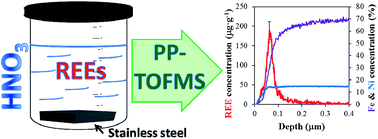
J. Anal. At. Spectrom., 2017,32, 1306-1311
https://doi.org/10.1039/C7JA00171A
Compressed sensing spectral imaging for plasma optical emission spectroscopy
A single-pixel compressed sensing spectral imaging system is designed and implemented on plasma optical emission for the first time.

J. Anal. At. Spectrom., 2016,31, 2198-2206
https://doi.org/10.1039/C6JA00261G
Evidence for charge transfer from hydrogen molecular ions to copper atoms in a neon–hydrogen analytical glow discharge
We show initial evidence that analyte atoms can be ionized by asymmetric charge transfer (ACT) process involving molecular ions, (M2+-ACT) in analytical glow discharges.
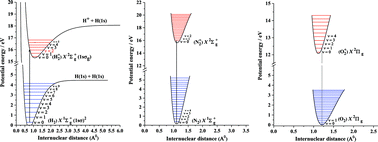
J. Anal. At. Spectrom., 2016,31, 2175-2181
https://doi.org/10.1039/C6JA00231E
Rare earth element determination in heavy crude oil by USN-ICP-MS after digestion using a microwave-assisted single reaction chamber
In this work a method for rare earth element (REE) determination by inductively coupled plasma mass spectrometry (ICP-MS) was proposed after heavy crude oil digestion by microwave-assisted wet digestion (MAWD) using a single reaction chamber (SRC) system.
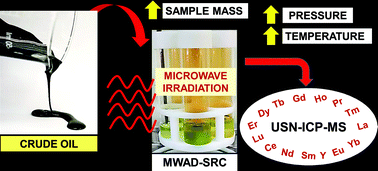
J. Anal. At. Spectrom., 2016,31, 1185-1191
https://doi.org/10.1039/C6JA00050A
Capabilities of radiofrequency pulsed glow discharge-time of flight mass spectrometry for molecular screening in polymeric materials: positive versus negative ion mode
Comparative investigations between positive and negative ionization modes for the analysis of polymeric materials have been tackled using PP-TOFMS.
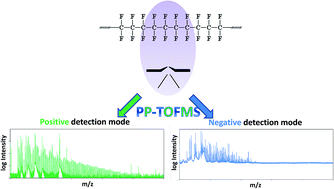
J. Anal. At. Spectrom., 2016,31, 212-219
https://doi.org/10.1039/C5JA00291E
Glow discharge optical emission spectrometry elemental mapping with restrictive anode array masks
Restrictive anode array masks are shown to allow large-diameter surface GDOES elemental mapping with improved homogeneity compared to typical approach.
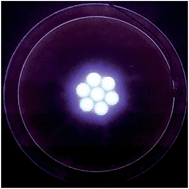
J. Anal. At. Spectrom., 2016,31, 163-170
https://doi.org/10.1039/C5JA00288E
A glow discharge time-of-flight mass spectrometry (GD-TOFMS) study of the ‘hydrogen effect’ using copper, iron and titanium cathodes
Hydrogen effects are investigated at very low H2 concentrations in an Ar plasma, and the likely discharge mechanisms are discussed.
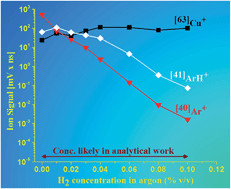
J. Anal. At. Spectrom., 2015,30, 1774-1781
https://doi.org/10.1039/C5JA00112A
Development of an isolation procedure and MC-ICP-MS measurement protocol for the study of stable isotope ratio variations of nickel
A method for high-precision analysis of mass-dependent natural variations in Ni isotope ratios, suitable for applications in the planetary sciences, has been developed and evaluated.
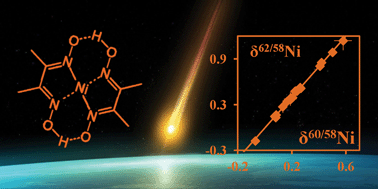
J. Anal. At. Spectrom., 2015,30, 1518-1530
https://doi.org/10.1039/C5JA00080G
Excitation and transition rate diagrams of singly ionized iron in analytical glow discharges in argon, neon and an argon–hydrogen mixture
Excitation and ionization processes of iron ions in argon-, neon- and argon–hydrogen glow discharges are described based on transition rate diagrams.
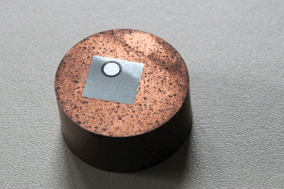
J. Anal. At. Spectrom., 2014,29, 2078-2090
https://doi.org/10.1039/C4JA00214H
Time-resolved mass-spectral characterization of ion formation from a low-frequency, low-temperature plasma probe ambient ionization source
Time-resolved mass spectrometry to characterize the temporal reagent-ion distribution from a low-frequency LTP probe.

J. Anal. At. Spectrom., 2014,29, 359-366
https://doi.org/10.1039/C3JA50318F
Image denoising techniques applied to glow discharge optical emission spectroscopy elemental mapping
Implementation of image denoising algorithms are shown to improve the spatial resolution in 3D GDOES elemental mapping.
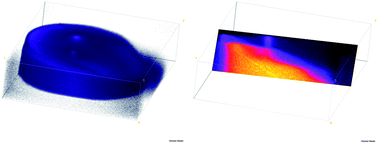
J. Anal. At. Spectrom., 2014,29, 315-323
https://doi.org/10.1039/C3JA50312G
Copper and antimony isotopic analysis via multi-collector ICP-mass spectrometry for provenancing ancient glass
Isotopic analysis of Cu and Sb has been performed on glasses from 14th century BC up to 6th century AD from different locations with the aim of investigating raw material sources used for glass production in antiquity.
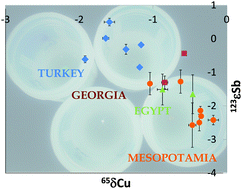
J. Anal. At. Spectrom., 2014,29, 58-64
https://doi.org/10.1039/C3JA50303H
Isotopic analysis of antimony using multi-collector ICP-mass spectrometry for provenance determination of Roman glass
Based on promising results obtained in earlier work on antimony ores, Lobo et al. investigated the use of natural variation in the isotopic composition of Sb as determined using multi-collector ICP-mass spectrometry (MC-ICP-MS) for provenance determination of Roman glass.
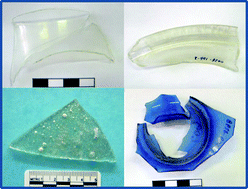
J. Anal. At. Spectrom., 2013,28, 1213-1219
https://doi.org/10.1039/C3JA50018G
Ultrafast elemental mapping of materials combinatorial libraries and high-throughput screening samples via pulsed glow discharge optical emission spectroscopy
Pulsed GDOES enables elemental mapping of materials combinatorial libraries at orders of magnitude faster analysis times compared to traditional techniques.
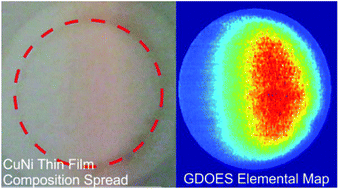
J. Anal. At. Spectrom., 2013,28, 1016-1023
https://doi.org/10.1039/C3JA50060H
Visualization of mass transport and heat transfer in the FAPA ambient ionization source
Schlieren and IR imaging were utilized to visualize mass and heat transfer from the FAPA ambient mass spectrometry source.

J. Anal. At. Spectrom., 2013,28, 379-387
https://doi.org/10.1039/C3JA30353E
Non-analyte signals and supervised learning to evaluate matrix effects and predict analyte recoveries in inductively coupled plasma optical emission spectrometry
Plasma species of Ar, H and O are monitored and used for modeling and for correcting signal bias caused by high concentrations of easily ionizable elements in ICP OES.
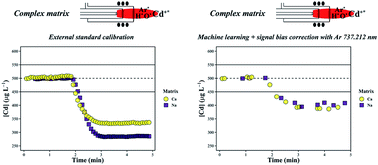
J. Anal. At. Spectrom., 2020,35, 679-692
https://doi.org/10.1039/D0JA00007H
About this collection
The JAAS Emerging Investigator Lectureship is given to recognise and support an emerging scientist working in the area of atomic spectrometry in the early stages of their independent career. Researchers are nominated by the community and the winner is chosen by the JAAS Editorial Board based on the originality, quality, impact and significance of the candidate’s research, as highlighted in their nomination. This is a collection of papers authored by previous recipients.
2021 Recipient
Jacob T. Shelley, Rensselaer Polytechnic Institute, USA
Jacob (Jake) Shelley, Alan Paul Schulz Career Development Professor of Chemistry at RensselaerPolytechnic Institute, earned his B.S. in Chemistry from Northern Arizona University. He completed his Ph.D. at Indiana University under Gary Hieftje where he studied novel plasma ionization sources for molecular mass spectrometry. Jake did postdoctoral research with Graham Cooks at Purdue University developing portable mass spectrometers capable of in situ analyses. After another post-doc at the University of Münster, he became Assistant Professor at Kent State University and later moved to RPI in 2016.
His research interests lie in the development of new hardware and software tools for mass spectrometry, which enable rapid, sensitive detection and identification of analytes in complex matrices. In addition, his research group uses high-energy plasma-generated species to perform unique gas-phase synthesis. These research areas converge in studying chemical origins-of-life through the Rensselaer Astrobiology Research and Education (RARE) Center, where he is the Associate Director.
Previous recipients include: George L. Donati, Wake Forest Univesity, USA; Marta Costas Rodríguez, Ghent University, Belgium; Márcia Foster Mesko, Federal University of Pelotas, Brazil; Lara Lobo, University of Oviedo, Spain; Gerardo Gamez, Texas Tech University, USA and Sohail Mushtaq, University of Bristol, UK